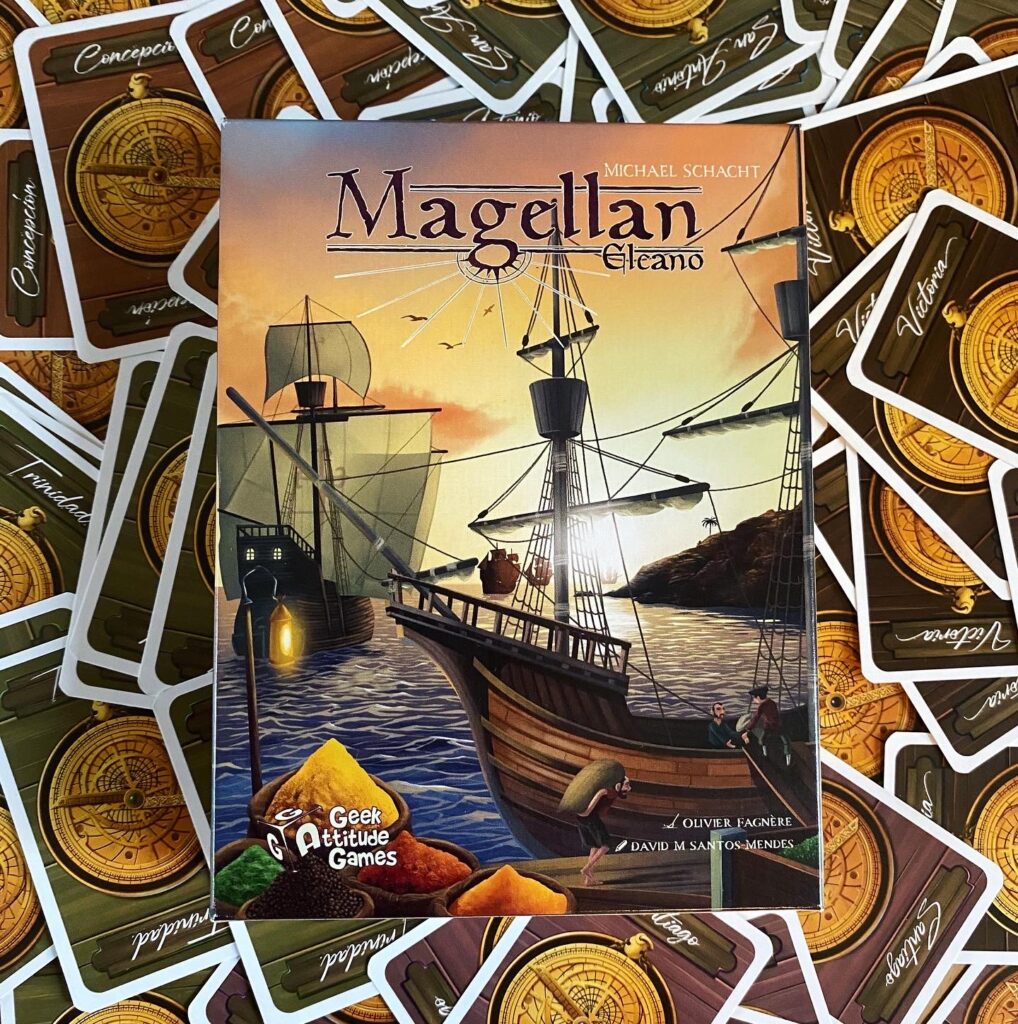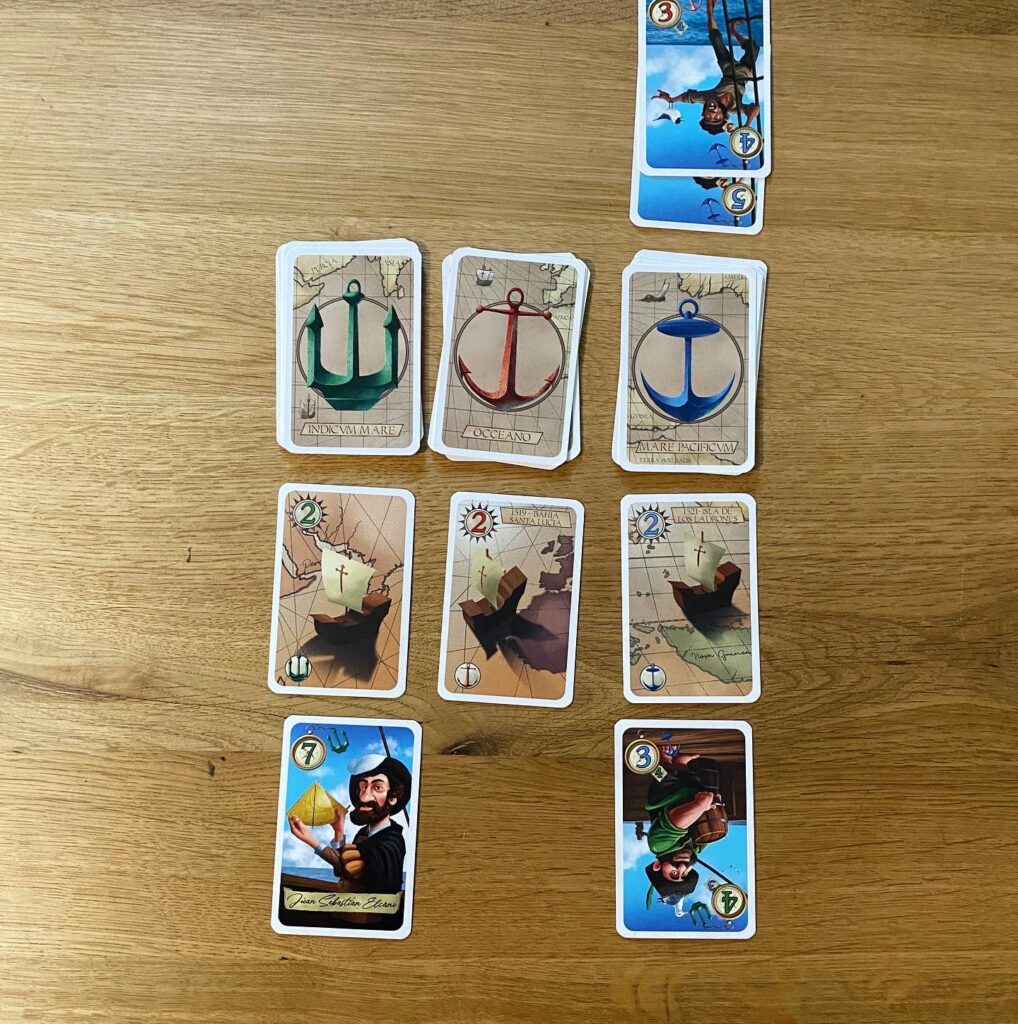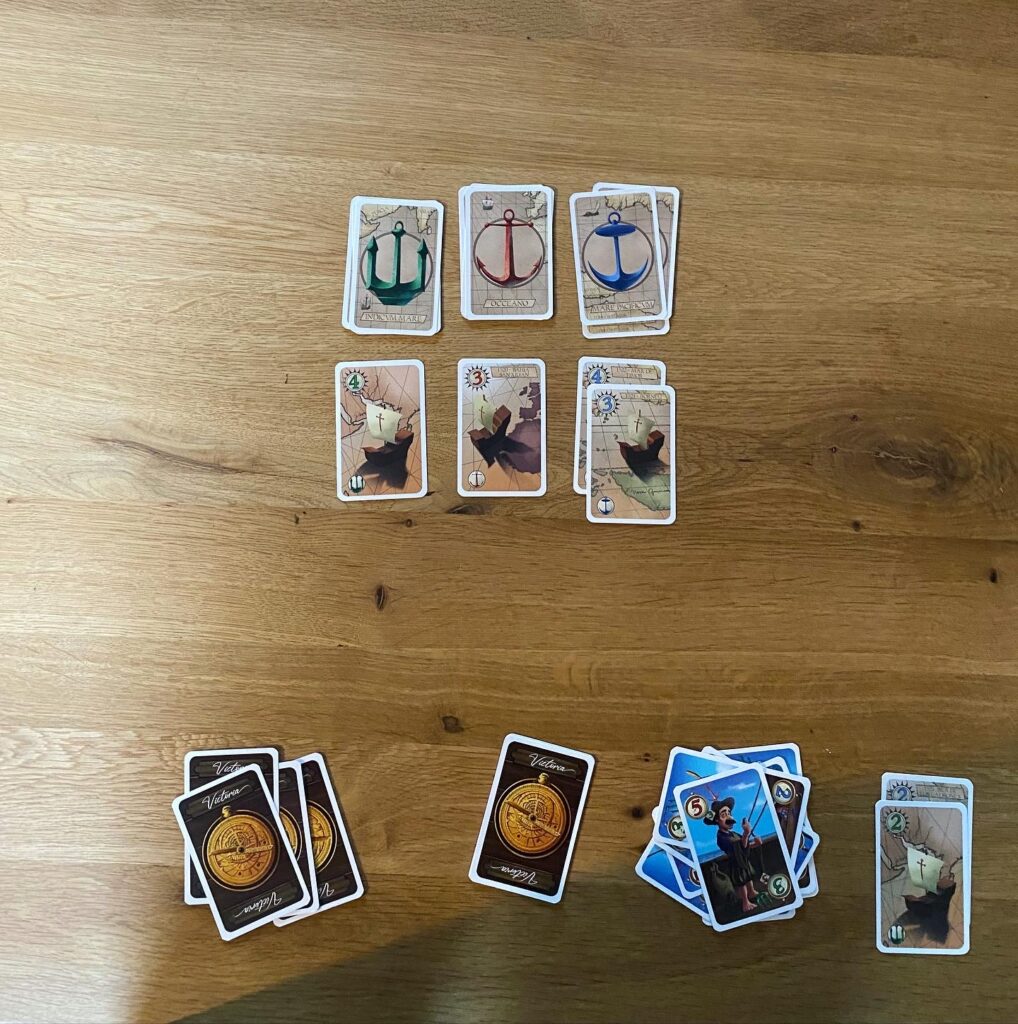An expedition led by Ferdinand Magellan is the focus of the eponymous game Magellan (Elcano) from Geek Attitude Games. The Portuguese sailed on September 20, 1519 with a fleet of five ships (Trinidad, Concepción, San Antonio, Santiago and Victoria) to make a journey around the world. Magellan did not survive the journey (he was killed by an indigenous tribe in the Philippines), and it was the volunteer, Juan Sebastián Elcano, who managed to complete the journey back as captain. Charles V gave him a coat of arms for it and for the rest of his life, he was set with a pension of 500 ducats (which must have been a lot of money in those days).

After this very brief, but nevertheless highly educational history lesson, it is time to go deeper into the game ‘Magellan’. In this game, much like expedition traveller Elcano, you are thrown to the wolves and put in charge of one of five ships. Each ship has fifteen crew members on board, who can be deployed in the form of crew cards (‘navigating’). The crew cards each have their own value and are needed to collect route cards. Each route card is worth a certain number of points. The captain with the most points after six rounds wins the game and a large pension pot.

Actually, I should leave it at that, because even Elcano did not get a manual on ‘how to become a captain in one day’, but I will save you the trouble. The route cards have three different colours: red, blue or green. The crew cards are also colour-coded. In each round, a route card of each colour is shown. Then, it is up to the players to play their crew cards, in turn. Some crew cards represent two colours, but you can only choose one colour. This adds dynamism to the game and makes it more tactical. What is not particularly clear is whether each player may only place one card after another player has passed. For the course of a two-player game, it is advisable to follow this rule. Once the navigation step has been taken, the players go ashore. The player who has placed the highest value of crew cards of a certain colour, receives the open route cards of that colour. Is it a draw? Then an additional route card of that colour is placed on the table in the next round.

Note: crew cards that have been used once are removed from the game after a win. The crew cards that you didn’t win with are returned to your hand. After this, each player takes two new crew cards from his deck (‘recruiting’) and another player becomes the starting captain of the next round. So don’t be too stingy and don’t play all your crew cards in the first round, you only get two in return.
In a five-player game, things are made a bit more difficult: a storm is coming. The storm cards are placed next to the route cards. As a true sailor, you try to get the storm card by playing covered cards. If you play the most covered cards, you get the storm card. Apart from that, the rules of the game are the same.

Oh, and if it is not entirely clear who should start the round (the sailors too could drink too much in the past), there is always the Pigafetta card (named after one of the eighteen survivors on Elcano’s ship, Antonio Pigafetta). This card is placed with the player who started the round. Pigafetta wrote stories about the journey and a report based on interviews with the survivors, from which parts became very famous. Maybe that is what awaits you after a game of Magellan. Wealth; by way of shiny ducats and a beautiful novella.



